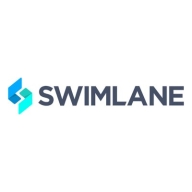

Swimlane and Microsoft Sentinel compete in security orchestration and response. Microsoft Sentinel offers a superior feature set, while Swimlane provides better cost-effectiveness for budget-conscious organizations.
Features: Swimlane emphasizes automation capabilities, flexibility in customizing workflows, and an easy-to-use interface. Microsoft Sentinel is equipped with advanced analytics, seamless integration with Microsoft tools, and comprehensive threat detection capabilities, positioning it well for environments utilizing Microsoft services.
Ease of Deployment and Customer Service: Swimlane's deployment is straightforward due to its adaptable architecture and minimal integration effort. Swimlane’s dedicated support offers personalized assistance. Microsoft Sentinel uses cloud-native deployment with advantages in Microsoft's ecosystem but requires alignment with Azure services. Sentinel depends on Microsoft's extensive global support network, which may be less personalized.
Pricing and ROI: Swimlane's lower upfront setup costs and transparent pricing make it attractive for budget management. Microsoft Sentinel may involve higher initial investment due to Azure dependencies but offers higher ROI through integrated features, leveraging Microsoft environments for enhanced threat management.


Microsoft Sentinel is a scalable, cloud-native, security information event management (SIEM) and security orchestration automated response (SOAR) solution that lets you see and stop threats before they cause harm. Microsoft Sentinel delivers intelligent security analytics and threat intelligence across the enterprise, providing a single solution for alert detection, threat visibility, proactive hunting, and threat response. Eliminate security infrastructure setup and maintenance, and elastically scale to meet your security needs—while reducing IT costs. With Microsoft Sentinel, you can:
- Collect data at cloud scale—across all users, devices, applications, and infrastructure, both on-premises and in multiple clouds
- Detect previously uncovered threats and minimize false positives using analytics and unparalleled threat intelligence from Microsoft
- Investigate threats with AI and hunt suspicious activities at scale, tapping into decades of cybersecurity work at Microsoft
- Respond to incidents rapidly with built-in orchestration and automation of common tasks
To learn more about our solution, ask questions, and share feedback, join our Microsoft Security, Compliance and Identity Community.
Swimlane is a leader in security orchestration, automation and response (SOAR). By automating time-intensive, manual processes and operational workflows and delivering powerful, consolidated analytics, real time dashboards and reporting from across your security infrastructure, Swimlane maximizes the incident response capabilities of over-burdened and understaffed security operations.
Swimlane was founded to deliver scalable innovative and flexible security solutions to organizations struggling with alert fatigue, vendor proliferation and chronic staffing shortages. Swimlane is at the forefront of the growing market for security automation and orchestration solutions that automate and organize security processes in repeatable ways to get the most out of available resources and accelerate incident response.
We monitor all Security Orchestration Automation and Response (SOAR) reviews to prevent fraudulent reviews and keep review quality high. We do not post reviews by company employees or direct competitors. We validate each review for authenticity via cross-reference with LinkedIn, and personal follow-up with the reviewer when necessary.